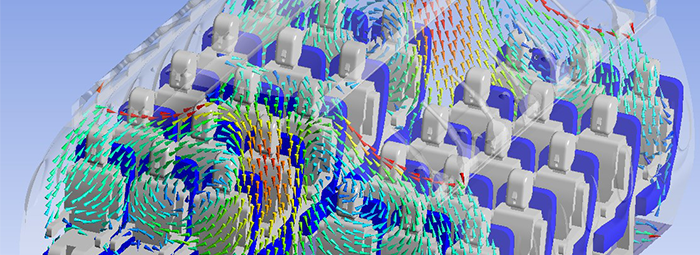
©2022 This excerpt taken from the article of the same name which appeared in ASHRAE Journal, vol. 64, no. 7, July 2022.
About the Authors
Stephen Trent is an engineer in the Cabin Environment/Air Quality group within Environmental Control Systems for Boeing Commercial Airplanes. He is the vice chair of ASHRAE Standard 161 and TC 9.3. Angela Davis is a materials and chemical engineer within the Chemical Technology group in Boeing Research and Technology. Tateh Wu, Ph.D., is an asso¬ciate technical fellow of Boeing Commercial Airplanes in the Environmental Control Systems (ECS) organization. Danny Menard is a flight engineer in Boeing Defense, Space and Security. Josh Cummins, Ph.D., is the probabilistic analytics team lead and a senior manager in Boeing’s Safety Management System for Boeing Global Services and Boeing Test and Evaluation. Joshua L. Santarpia, Ph.D., is the research director for Counter WMD programs at the National Strategic Research Institute, associate professor of microbiology and pathology and program director for Biodefense and Health Security Degree Program at the University of Nebraska Medical Center. Nels Olson, Ph.D., is an analytical chemist with over 43 years of experience working in engineering, biotechnology and aerospace industrial and academic environments
Computational fluid dynamics (CFD) models of an aircraft cabin and an indoor commercial space (ICS) were used to characterize the spread of aerosols generated by a coughing or breathing person suffering from a respiratory illness. Occupant exposure to these aerosols was then compared between the ICS and the aircraft cabin. The lifetime of the aerosols, system designs and airflow patterns that reduce their concentration over time were also examined. Differences between steady state and well-mixed conditions were identified and comparisons made between the model environments. The CFD analysis results were also compared to empirical data from a U.S. Transportation Command study that tracked particles introduced by simulated infectious individuals in an airplane cabin environment.
From March 2020 to October 2020, only 44 known cases of COVID-19 were transmitted in the air travel system while 1.2 billion passengers traveled by air worldwide.1,2 While this transmission rate is certainly undercounted, other studies tracking cases in the air travel system also show very low transmission rates amongst occupants.1 The low risk of transmission may be aided by the multilayered approach adopted by airlines, regulators and other organizations to keep passengers and flight crews healthy.3 This approach includes physical distancing, masking, vaccinations, washing hands, avoiding travel for individuals feeling unwell and disinfecting the airplane cabin and flight deck.
However, even with these additional precautions, an infectious person may still be onboard. Therefore, additional studies were undertaken to characterize the aircraft cabin airflow and understand why the risk of transmission was lower than might be expected for an indoor commercial space (ICS).
Read the Full Article
ASHRAE Members have free access to the full-text PDF of this article as well as the complete ASHRAE Journal archives back to 1997 in the Free Member Access Area.
Non-members can purchase features from the ASHRAE Bookstore. Or, Join ASHRAE!
Return to Featured Article Excerpts
Return to ASHRAE Journal Featured Article Excerpts